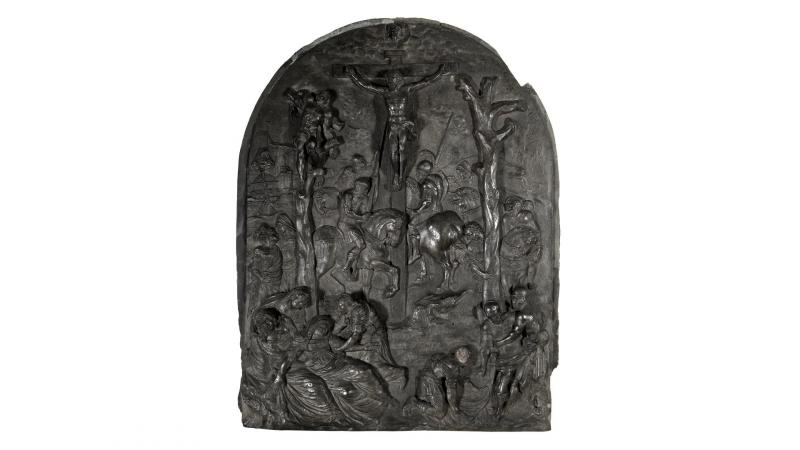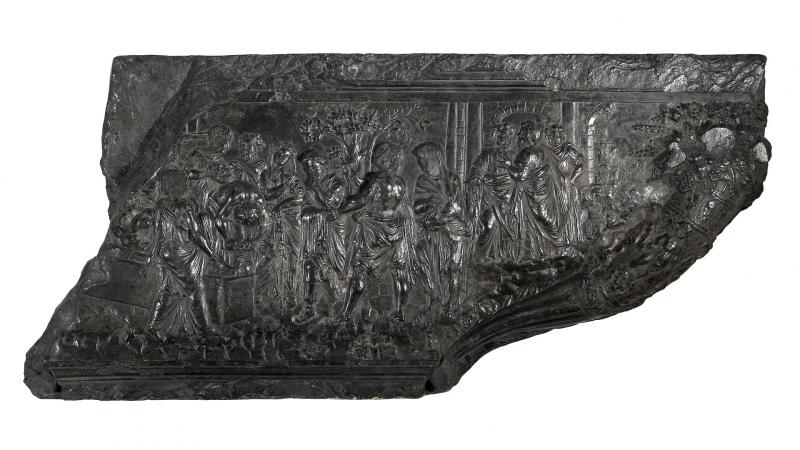The museum preserves a significant collection of pieces sculpted from black marble, most likely from the Theux quarries. Among these, a large console, one of the faces of which is decorated with a remarkable burial scene, can be dated to the mid-16th century. It comes from the foundations of the Brigode hotel, which was formerly located in Place Verte near the Saint-Lambert cathedral.
These black marbles are traditionally attributed to the Italian-Liège workshop of the Palardin-Fiacre family. Founded in 1518 by Nicolas (I) Palardin († 1522), who was succeeded by Nicolas II († 1580) and his brother-in-law, Martin Fiacre († 1601), this workshop was still open in the 17th century. It should be pointed out, however, that other "image makers" who worked with the same material were active in Liège at the same time, such as Lambert Suavius, Thomas Thollet and François Borset, though their collaboration or competition with the former is not clearly defined.
The Theux origin of all the pieces in this collection would also merit a systematic geological study, as it is not always easy to distinguish Theux marble from marble from the quarries of Dinant with the naked eye.
Two crucifixion scenes, as well as some documents that are dated, or that can be dated, with relative precision can also be compared to this exceptional document. This is a recumbent effigy from 1537, a holy font with the arms of Helemaine Castaigne, the abbess of Val-Notre-Dame (near Huy). It is dated 1546. There are also two fragments of small columns coming from the rood screen of the Premonstratensian church (former Beaurepart abbey), which can be dated to the abbey of Leonardo of Limburg (1525–1546).

